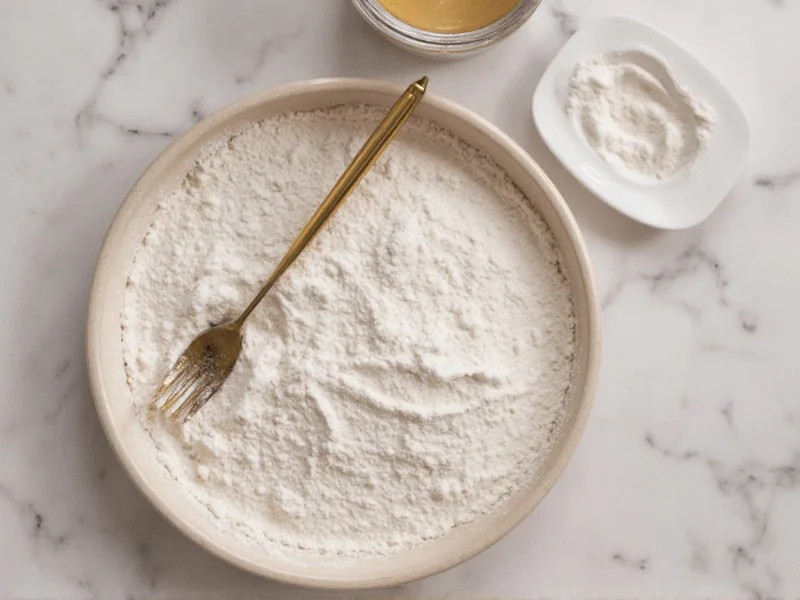Understanding File Powder and Its Culinary Significance
File powder serves as both a flavor enhancer and thickening agent in Creole and Cajun cuisine, particularly in gumbo. This traditional ingredient comes from the dried and ground leaves of the North American sassafras tree (Sassafras albidum). Unlike roux or okra, file powder provides a unique earthy flavor with subtle notes of root beer and wintergreen. Understanding how to make file powder properly ensures you capture these distinctive characteristics while maintaining safety standards.
Safety Considerations When Making File Powder
Before learning how to make file powder at home, you must understand important safety considerations. Sassafras contains safrole, a compound that in large quantities can be harmful. The FDA has restricted commercial sassafras products containing more than 10 ppm of safrole. When making homemade file powder:
- Use only the leaves, not the root bark which contains higher safrole levels
- Moderation is key—use 1/4 to 1/2 teaspoon per serving of gumbo
- Store properly to maintain freshness and prevent mold
- Consider alternatives if you have health concerns or cannot source sassafras
Traditional Method for Making File Powder
Identifying and Harvesting Sassafras Leaves
Proper identification is crucial when making file powder from sassafras leaves. Sassafras trees have distinctive leaves that come in three shapes on the same tree: oval, mitten-shaped, and three-lobed. The best time for harvesting depends on leaf maturity and flavor development:
| Harvesting Period | Leaf Characteristics | Flavor Profile |
|---|---|---|
| Early Spring (April-May) | Tender, bright green leaves | Mild, delicate flavor |
| Late Spring (May-June) | Fully developed, medium green | Optimal balance of flavor |
| Summer (July-August) | Dark green, mature leaves | Stronger, more pronounced flavor |
Drying Sassafras Leaves Properly
The drying process significantly impacts the quality of your homemade file powder. For traditional file powder preparation, follow these steps:
- Wash leaves gently and pat dry with clean towels
- Spread leaves in a single layer on drying racks or clean screens
- Place in a warm, dark, well-ventilated area away from direct sunlight
- Turn leaves daily to ensure even drying (typically takes 7-14 days)
- Leaves are ready when they become brittle and crumble easily
Avoid using ovens or dehydrators as excessive heat can degrade the delicate flavors. Properly dried leaves should retain their green color without browning.
Grinding to Perfect Consistency
When making file powder, the grinding technique determines its effectiveness as a thickener. For optimal results:
- Use a high-quality spice grinder or mortar and pestle
- Grind in small batches to prevent overheating
- Aim for a fine, uniform powder (similar to cornstarch)
- Sift the powder to remove any leaf fragments
- Regrind larger particles for consistent texture
The ideal homemade file powder recipe produces a powder fine enough to dissolve completely in hot liquid without leaving gritty residue.
Alternative Options and Substitutes
If you cannot source sassafras or have safety concerns, consider these alternatives for file powder:
- Dock leaves (Rumex crispus) - traditional Native American substitute
- Ground dried okra powder - provides similar thickening properties
- Cornstarch or arrowroot - for thickening only (lacks flavor)
- Commercial file powder - ensures proper safrole levels
When exploring file powder substitute options, remember that none will replicate the exact flavor profile of authentic sassafras-based file.
Storage and Usage Recommendations
Proper storage maintains the quality of your homemade file powder. Store in an airtight container away from light, heat, and moisture. For best flavor retention:
- Use within 6-12 months for optimal flavor
- Check periodically for moisture or mold
- Store in a cool, dark cupboard (not the refrigerator)
- Label with harvest date for freshness tracking
When using file powder for gumbo recipe preparation, always add it after removing the pot from heat. Adding file to boiling liquid causes stringiness rather than proper thickening. Start with 1/4 teaspoon per serving and adjust to taste.
Common Mistakes to Avoid
Many home cooks encounter issues when making file powder for the first time. Avoid these common pitfalls:
- Using root bark instead of leaves (higher safrole content)
- Insufficient drying leading to mold in stored powder
- Over-grinding which generates heat and degrades flavor
- Adding file powder to boiling liquid causing stringiness
- Storing in transparent containers exposed to light
Frequently Asked Questions
Can I use file powder made from other types of trees?
No, authentic file powder must come specifically from sassafras leaves (Sassafras albidum). Other trees in the laurel family may be toxic. Some traditional Native American preparations used dock leaves as an alternative, but these produce a different flavor profile and thickening effect.
How much file powder should I use in gumbo?
Start with 1/4 teaspoon of file powder per serving of gumbo. Add it after removing the pot from heat, as adding file to boiling liquid causes stringiness. You can gradually increase to 1/2 teaspoon per serving if desired, but file has a strong flavor that can overwhelm other ingredients when used excessively.
Is homemade file powder safe to consume regularly?
When made properly from leaves (not root bark) and used in moderation (1/4-1/2 teaspoon per serving), homemade file powder is generally considered safe. The leaves contain significantly less safrole than the roots. However, pregnant women, nursing mothers, and individuals with liver conditions should consult a healthcare provider before regular consumption.
Can I speed up the drying process with a dehydrator?
While you can use a dehydrator on the lowest setting (95-100°F), traditional file powder preparation avoids artificial heat sources. Excessive heat degrades the delicate volatile oils responsible for file's distinctive flavor. Air drying in a dark, well-ventilated space preserves more of the complex flavor compounds that make authentic file powder special.











 浙公网安备
33010002000092号
浙公网安备
33010002000092号 浙B2-20120091-4
浙B2-20120091-4